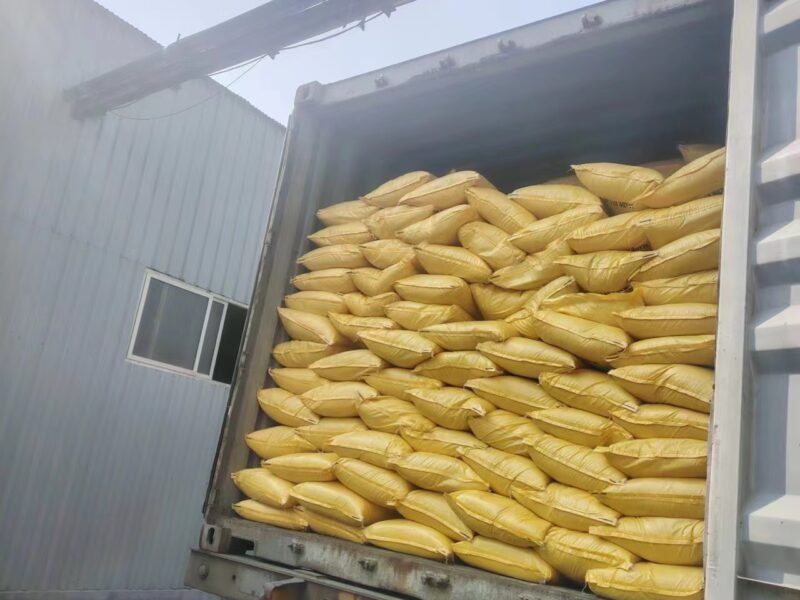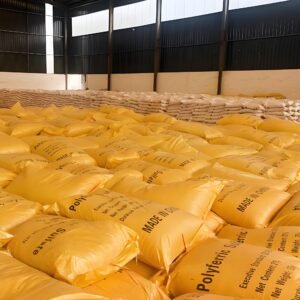
Contents
- 1 What is Poly Ferric Sulfate?
- 2 Top Reasons Plants Are Switching to PFS
- 3 ✅ 1. Superior Coagulation Efficiency
- 4 ✅ 2. Wider pH Operating Range
- 5 ✅ 3. Significantly Less Sludge
- 6 ✅ 4. Environmental and Health Safety
- 7 ✅ 5. Cost Savings That Go Beyond the Price Tag
- 8 ✅ 6. Versatility Across Applications
- 9 ???? Real-World Adoption is Growing
- 10 Conclusion: The Clear Choice for a Cleaner Future
- 11 Choosing the Right Poly Ferric Sulfate for Your Needs
- 12 Looking for a Reliable PFS Supplier?
Choosing Poly Ferric Sulfate
Introduction: A Quiet Revolution in Water Treatment
In the world of water and wastewater treatment, results matter. Every decision — from chemicals to equipment — directly affects water quality, compliance, operating costs, and environmental impact. One shift that’s gaining serious traction across the industry is the move from traditional coagulants to Poly Ferric Sulfate.
Why are more plants switching to PFS? It’s a smart, performance-driven response to today’s water treatment demands.

What is Poly Ferric Sulfate?
Poly Ferric Sulfate is a high-performance, iron-based inorganic polymer coagulant used to treat drinking water, industrial wastewater, and municipal effluent. It appears as a yellow-brown liquid or solid and works by binding to impurities in water to form flocs that can be easily removed.
But unlike traditional coagulants like aluminum sulfate (alum) or ferric chloride, PFS brings better efficiency, lower sludge volumes, and environmental advantages — all while reducing long-term operational costs.
Top Reasons Plants Are Switching to PFS
✅ 1. Superior Coagulation Efficiency
PFS has a higher polymeric iron content, which means it forms stronger, denser flocs faster. This translates to:
-
Clearer water output
-
Lower turbidity
-
More effective removal of organic matter, phosphorus, and heavy metals
In practice, PFS often requires a lower dose to achieve the same or better results than traditional coagulants — saving money in the long run.
✅ 2. Wider pH Operating Range
Traditional coagulants usually require tight pH control (e.g., alum works best between 5.5–7.5). PFS, on the other hand, performs reliably across a broad pH range (4–11), reducing the need for costly pH adjustment chemicals and making treatment more flexible.
✅ 3. Significantly Less Sludge
One of the biggest operational burdens in water treatment is sludge handling. PFS produces:
-
Less sludge
-
More compact flocs
-
Easier dewatering
This means fewer resources spent on sludge disposal and maintenance, as well as improved efficiency in sludge processing systems.
✅ 4. Environmental and Health Safety
With growing concerns about aluminum residuals in drinking water and the corrosive nature of ferric chloride, PFS stands out as a non-toxic, aluminum-free, and safer-to-handle alternative. It’s compliant with most international standards and supports greener water treatment practices.
✅ 5. Cost Savings That Go Beyond the Price Tag
While the upfront cost of PFS may be slightly higher than traditional coagulants, its total cost of use is often much lower. Why?
-
Reduced chemical dosage
-
Lower sludge handling costs
-
Decreased maintenance and equipment corrosion
-
Fewer pH adjustment chemicals needed
Over time, these savings add up to a strong ROI for water treatment plants.
✅ 6. Versatility Across Applications
It isn’t just for municipal water. It’s widely used in:
-
Industrial wastewater treatment
-
Sludge dewatering
-
Pulp and paper
-
Textiles
-
Mining & metallurgy
-
Petrochemical and refinery effluents
Anywhere high-efficiency coagulation is needed, PFS can be a smart fit.
???? Real-World Adoption is Growing
More and more facilities worldwide — from Asia to Europe and North America — are incorporating PFS into their water treatment programs. With stricter discharge standards, rising chemical costs, and increasing pressure to reduce environmental impact, switching to PFS is becoming the industry standard rather than the exception.
Conclusion: The Clear Choice for a Cleaner Future
If your facility is still relying on outdated coagulants like alum or ferric chloride, now is the time to consider the upgrade. Poly Ferric Sulfate offers a better balance of performance, cost-efficiency, and sustainability — and it’s reshaping how the industry thinks about coagulation.
Choosing the Right Poly Ferric Sulfate for Your Needs
With various PFS grades available, selecting the optimal one depends on several factors:
- Water Quality: The specific types of impurities present in the water you’re treating.
- Desired Outcome: The specific goals you aim to achieve (e.g., turbidity removal, color reduction).
- pH Level: The pH of your water source.
WaterCareChem can help you navigate these factors and choose the most suitable PFS grade for your application.
Looking for a Reliable PFS Supplier?
At WaterCareChem, we provide high-quality Poly Ferric Sulfate tailored to your specific application — backed by expert support, international compliance, and fast, global delivery.
???? Contact us today for a free sample, technical guidance, or a customized quote.
